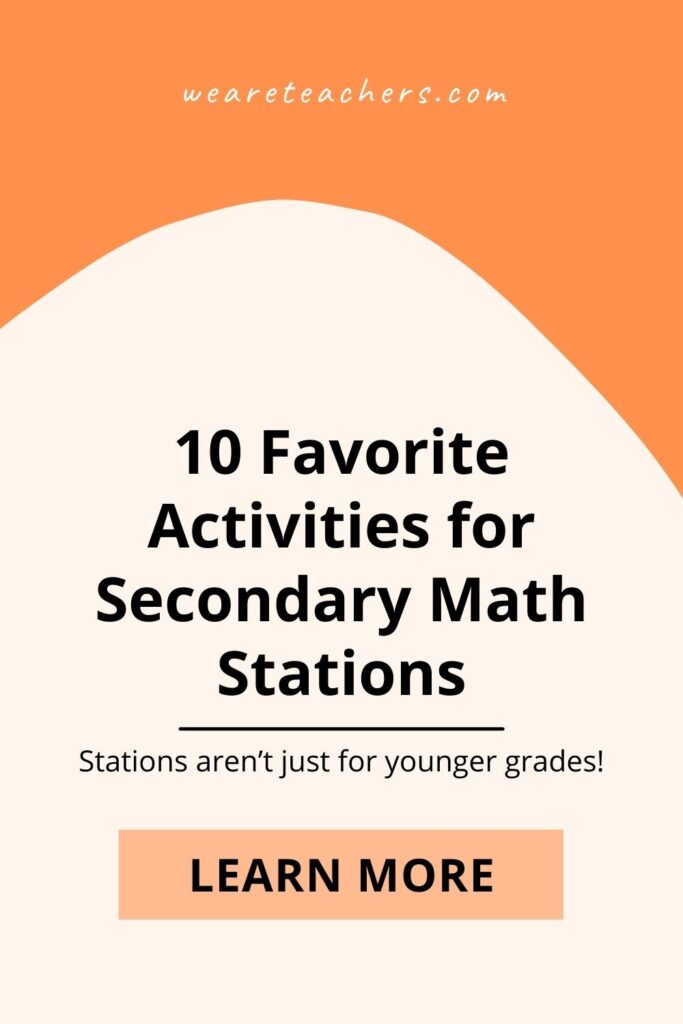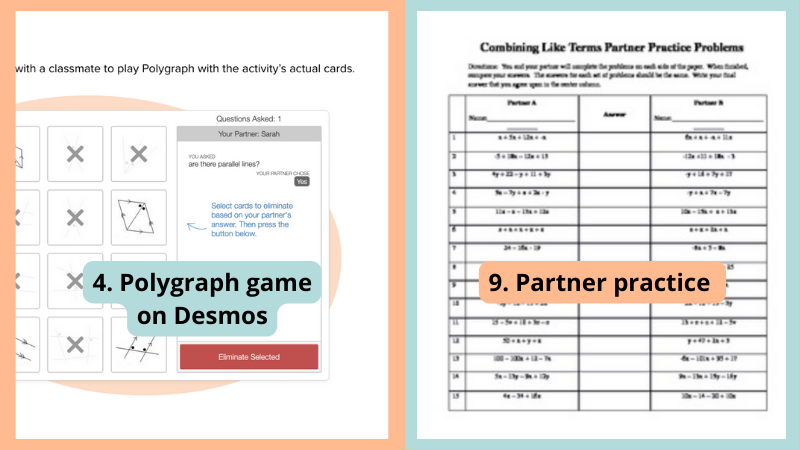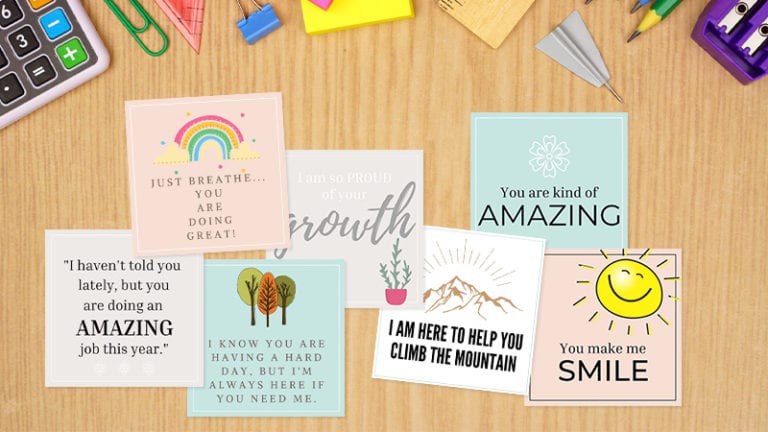It seems odd: Elementary teachers have mastered the concept of utilizing station teaching, but for some reason it feels like we can’t in secondary—but why not?
Station teaching in secondary math classrooms can be an effective way to reach all learners, but especially those who are struggling. I like using stations to review because my students ask more questions when they work in smaller groups. It’s less intimidating for a student to say “I don’t get this” or “Can you help me?” in the company of a few students as opposed to a whole class discussion. This is increasingly important as anxiety is on the rise in the post-pandemic education world.
Because we have such a short amount of time to teach our content and very little flexibility, stations allow students to work on a variety of skills in short, easy-to-digest setups. These are my favorite low-prep station ideas—I’ve separated them into technology-based and pencil and paper—that can be used at the secondary level.
Technology-Based Station Ideas
1. Blooket
My students love Blooket! Like any other technology-based game, there are free and premium versions. Blooket can be worked on independently or as a class, so it’s super easy to manage a station activity. Just provide students with a link and let them get started. I have students take screenshots of their final scores (accuracy percentage) as evidence of their learning.
2. Gimkit
Gimkit is amazing! They are constantly changing and upgrading their game modes. Again, there are both free and paid versions. As an added bonus, the game can be assigned by creating a virtual class. You will be able to see a plethora of data in each game report.
3. Edpuzzle
I like to use Edpuzzle for station work to reinforce or introduce a concept. It can be assigned through most learning platforms. And it’s free! For more, check out my big list of ways I use Edpuzzle.
4. Desmos
Desmos has wonderful premade lessons, games, and interactive activities. It’s free and you can assign work through a virtual class.
Try one of Desmos’ polygraph games. Here’s one of my favorites, called “Guess My Line.” It’s fantastic for graphing linear equations. And don’t miss my top tricks for Desmos!
Tech-Free Station Ideas
5. Whiteboards
I always create one of my math stations to include a “Whiteboard Warm-Up.” Select a small number of students (five or fewer). Give each student a worksheet, whiteboard, marker, and eraser. Students work through the problems with your immediate feedback and guidance. I max out at five so that my students all fit comfortably at my horseshoe table.
6. Scavenger hunts
While I work with small groups, my other students can be working on a scavenger hunt posted around the room. Students will work on a math problem, then find the next one based on their answer. Here’s a great freebie from Robert Duncan that I like to use when learning about graphing linear functions.
7. Matching
Set up a station with a simple, low-prep matching activity. Have a set of task cards with math problems. Students work through the problems and find the matching card with the correct answer. Pro tip: Place the answer key in a large manila envelope so students can check their own answers when they finish.
8. Paper chains
Create a table where students solve math problems on strips of paper. The first strip says “start” to indicate the first math problem. Students solve a math problem and look for the answer on another strip of paper. Then, they link the two together to begin a paper chain. Students continue solving problems until they reach the one that says “finish.” My advice is to be in charge of this station the first time you try it with your students so that you can model how it’s done. Read more about paper chains here.
9. Partner problems
In this activity, students will work with a partner to complete math problems. This is similar to a think-pair-share activity. Here’s how it works: Each student solves their own problem. Both problems are different, but the answers are the same. If students have different answers, one of them is incorrect. They need to review their work to figure out who is right. Check out my free activity on combining like terms!
10. Error analysis
At this station, students will review math problems that have been completed incorrectly. Students have to figure out what mistakes were made and correct them, just as a teacher would. Click here to make a copy of my template!
Expert Tips:
- Ensure you have something for students to do if they finish their station work early.
- Have a guide sheet or checklist for students to “check off” or show their work as they travel through their assigned stations.
- Use a digital timer on your board so all students have a clear understanding of the time remaining (and when to rotate).
Do you use math stations in your secondary classroom? Let us know your best tips in the comments!
Plus, for more articles like this, be sure to subscribe to our newsletters.


